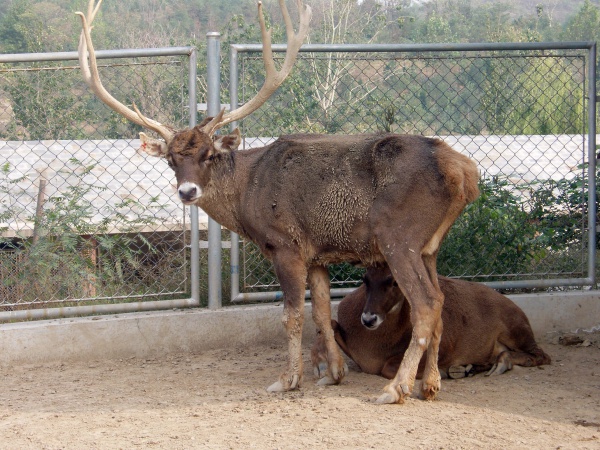Facts About White-lipped (Thorold's) Deer
Thorold's deer, commonly known as the white-lipped deer, is a captivating yet endangered species native to the high-altitude regions of the eastern Tibetan Plateau. This noble animal was first described by the explorer Nikolai Przhevalsky in 1883, with its name honoring G. W. Thorold, who procured the first specimens.
As of 2011, over 100 Thorold's deer are housed in ISIS-registered zoos, with approximately 7,000 still inhabiting the wild. The species name, albirostris, refers to the distinctive white muzzle and lips of the deer.
Thorold's deer are among the larger deer species, with males weighing between 180-230 kg and females between 90-160 kg. They are easily identifiable by their large antlers, long ears, and unique adaptations that allow them to thrive in high-altitude environments.
These deer are primarily found in scattered populations across the Chinese provinces of Tibet, Sichuan, and Qinghai, living at elevations of 3,500-5,100 meters. They migrate seasonally, moving from high summer pastures to lower terrains during winter. Thorold's deer are crepuscular, meaning they are most active during dawn and dusk, and they typically live in herds, grazing on grasses and sedges.
The rutting season for Thorold's deer occurs from September to November. During this period, males compete for females through various displays and vocalizations. Females give birth to a single calf in May or June after a gestation period of 220-250 days. Calves are born with white spots and can stand within 40 minutes of birth, reaching sexual maturity in their second or third year.
Unfortunately, Thorold's deer face significant threats from human activities, such as agriculture and hunting for meat and traditional medicine. They are listed as vulnerable by the IUCN and are a Class I protected species in China. Conservation efforts include farming for antlers and protection in zoos around the world.

 Kazakhstan
Kazakhstan